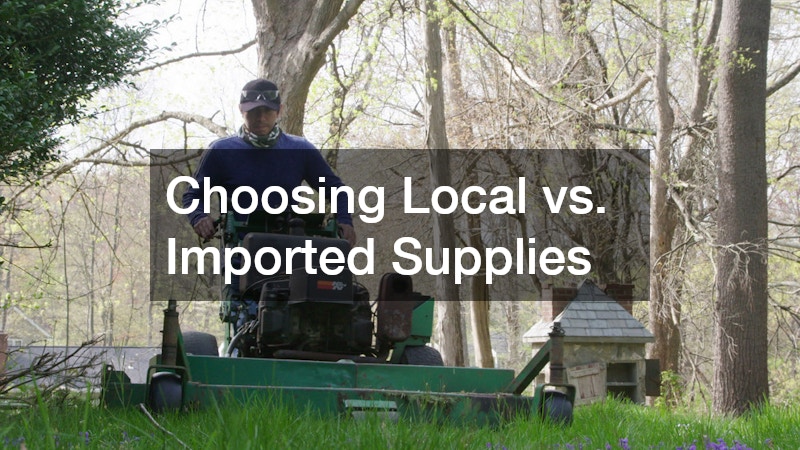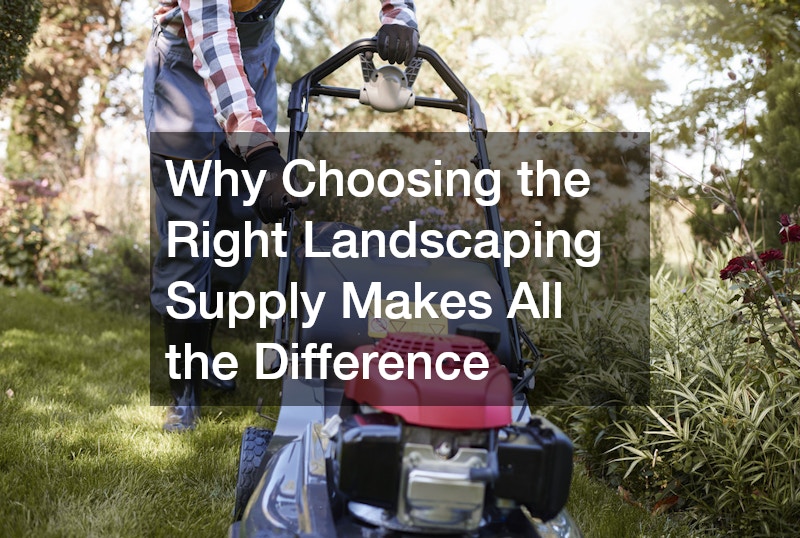Landscaping is more than just an aesthetic enhancement of your living space; it is an investment in your environment and lifestyle. Selecting the right landscaping supply can dramatically affect both the immediate appeal of your outdoor space and its long-term maintenance and longevity. Understanding the key elements that contribute to a successful landscaping project is essential for any homeowner or professional landscaper.
The Essential Landscaping Supplies to Consider
Hardscaping Materials
Hardscaping materials like rocks, bricks, and pavers form the structural foundation of a landscaping project. These materials not only define the space visually but also contribute to the functionality of the landscape, offering paths, borders, and surfaces. It is crucial to choose durable materials that can withstand the climate and usage demands of the area, ensuring longevity and sustainability.
Incorporating different textures and colors of hardscaping materials can transform a basic garden into a dynamic, inviting space. The choice between natural stone and manufactured materials can significantly influence both the cost and aesthetic of the project. Natural stone, for example, provides a timeless and authentic look but can be more expensive and challenging to source.
Hardscaping materials are not only about aesthetics but also about sustainability and functionality. Permeable pavers, which allow water to pass through, are an eco-friendly option to prevent runoff and erosion. By selecting the right materials, you can create a landscape that not only looks impressive but also supports environmental balance.
Softscaping Elements
Softscaping elements, including plants, soil, and mulches, bring your landscape to life. The choice of plants should align with local climate conditions, ensuring they thrive with minimal maintenance. Native plants are often recommended as they are adapted to the local environment, requiring less water and fertilizer, which supports ecology and reduces environmental impact.
The quality of soil used in your landscaping project directly affects plant health and growth. Investing in rich, organic soil amendments can enhance soil structure, fertility, and drainage, leading to healthier and more vibrant plant life. Understanding the specific needs of each plant species will guide you in selecting the appropriate soil type and amendments.
Mulching is a crucial softscaping practice that aids in moisture retention, temperature regulation in the soil, and weed reduction. Organic mulches such as wood chips or straw gradually decompose, adding nutrients to the soil and supporting plant life. Choosing the right type and amount of mulch can significantly influence the health of your garden ecosystem.
How the Choice of Landscaping Supplies Influences Cost and Budget
Initial Investment vs. Long-term Savings
While initially, high-quality landscaping supplies may seem more expensive, they often result in long-term savings. Durable materials reduce the need for frequent replacements and repairs, ultimately offering better value over time. Strategic investment in high-quality supplies can significantly minimize future costs associated with maintenance and potential landscape renovation.
For example, opting for durable pavers over cheaper alternatives can prevent cracking and degradation, avoiding costly repairs. Similarly, investing in drought-resistant plants may incur higher initial costs but save water expenses in the long run. Understanding the balance between upfront costs and long-term savings is key to effective landscape budgeting.
Budgeting for Quality Supplies
Allocating appropriate budgets for landscaping materials is essential for achieving a quality finish. High-quality materials often come with a higher price tag, but their durability and aesthetic benefits are substantial. Strategic budgeting can help prioritize spending on critical elements without compromising the overall landscape vision.
To effectively budget for quality supplies, homeowners should conduct thorough research, seeking multiple quotes and professional advice. Comparison of material quality, longevity, and compatibility with existing landscape elements can guide decisions. It is also beneficial to map out the entire project to understand where premium investments make the most impactful contribution.
The Role of Landscaping Supplies in Environmental Impact
Sustainability in Landscaping
Sustainability is a crucial consideration in modern landscaping, where the choice of materials can either harm or help the environment. Eco-friendly materials like bamboo, recycled stone, or sustainably harvested wood reduce the environmental impact. Emphasizing sustainability can create a landscape that supports local ecosystems and reduces carbon footprints.
Adopting sustainable practices, such as the use of permeable paving, can address issues like water runoff and soil erosion. Incorporating solar-powered lighting and natural irrigation systems further supports environmental responsibility. These sustainability practices also often increase the landscape’s resilience and reduce future maintenance costs.
Choosing Local vs. Imported Supplies
Sourcing materials locally for a landscaping project can drastically reduce the environmental impact associated with transportation emissions. Local supplies tend to align better with regional climate and soil conditions, ensuring their resilience and compatibility. Additionally, supporting local suppliers fosters the local economy and community sustainability efforts.
While imported materials might offer unique aesthetic qualities or lower upfront costs, they often come with higher transportation-related environmental costs. Careful consideration of the trade-offs between local and imported materials ensures informed decision-making. In many cases, local materials provide a balance of quality, environmental consideration, and cost-efficiency.
Choosing the right landscaping supplies is a foundational step in achieving a successful and sustainable landscaping project. By understanding the essential supplies needed, managing costs through strategic budgeting, and prioritizing environmental impact, both individuals and professionals can create landscapes that are beautiful, functional, and lasting. A well-planned approach not only enhances aesthetics but also ensures the longevity and health of the designed outdoor space.





